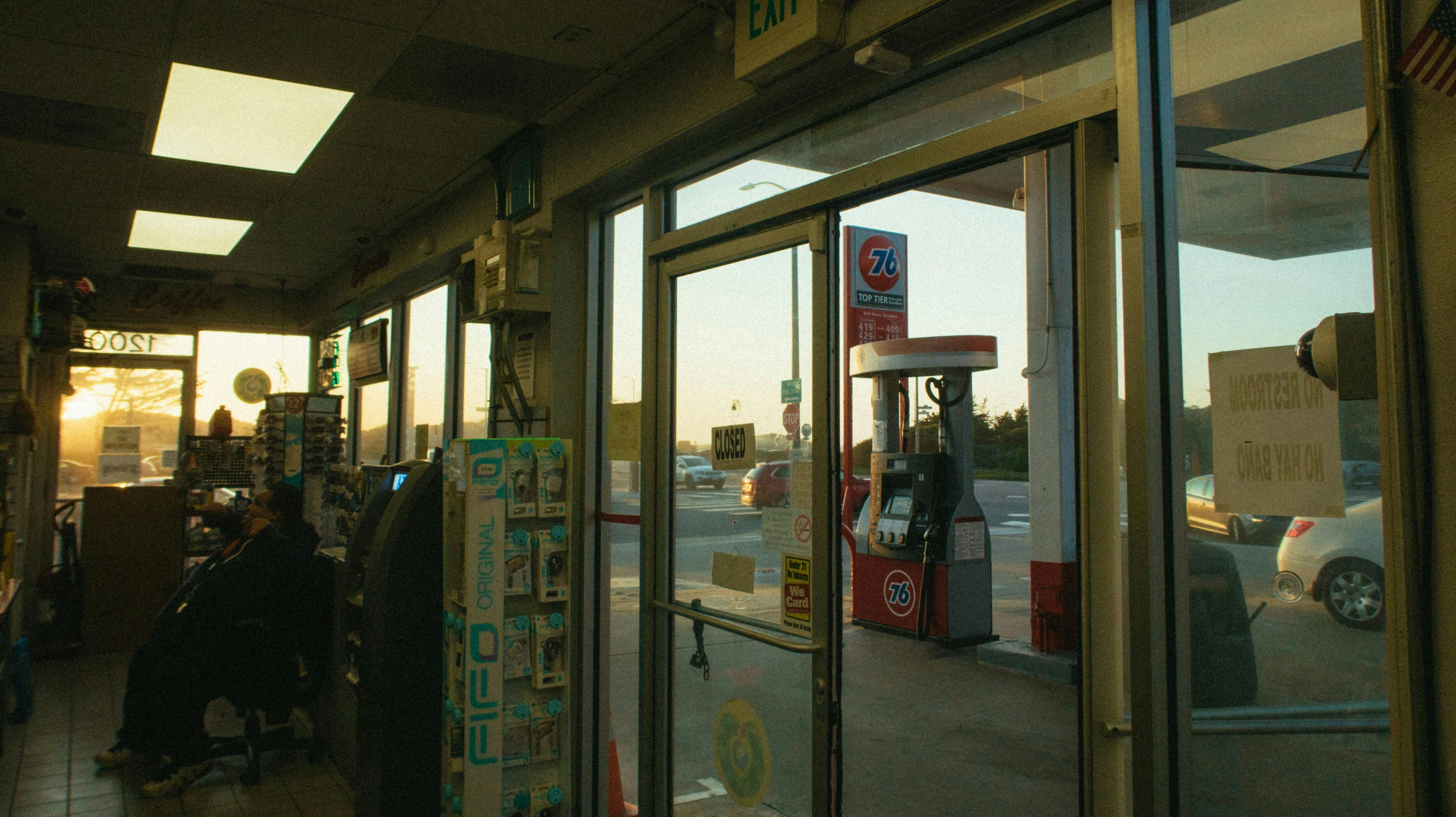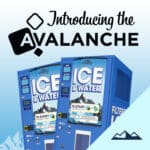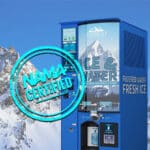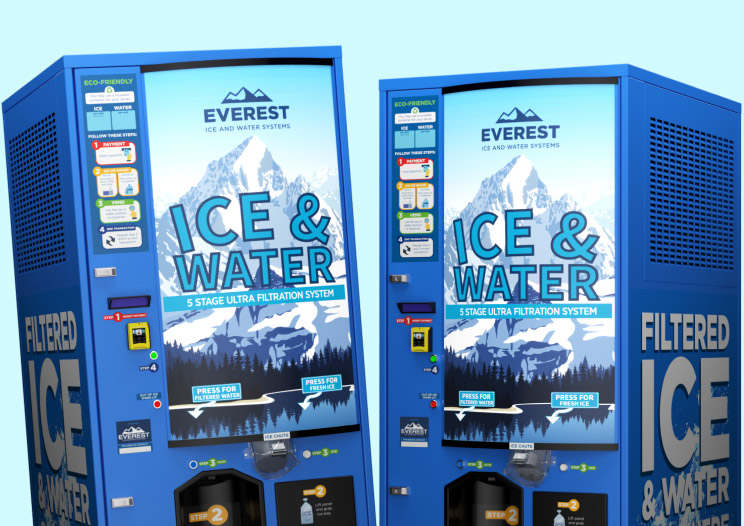Understanding How Gas Station Ice Machines Work

Ice machines are an integral part of many gas stations and convenience stores. Offering freshly made ice provides a valuable service for customers filling their coolers for road trips or stocking up on cold drinks from beverage dispensers. But as you navigate your gas station ice purchases, you may wonder: How exactly do these ice makers work their magic?
Commercial gas station ice machines produce, store, and dispense ice on demand, giving staff and customers easy ice access. Learn exactly how the process works below.
Why Commercial Ice Vending Machines Are Essential at Gas Stations
Offering fresh, chilled ice for customers is no longer just a perk — it’s practically essential for any competitive gas station or convenience store operation. Customers are always eager for a cold drink, so ice helps drive thirsty patrons. Properly functioning commercial ice equipment reduces the risk of losing sales from outages while providing value-added service.
Strategically placed ice dispensers make grabbing ice fast and convenient. Choose wisely, though — outdated units guzzle energy and can struggle to keep up with high demand.
What Type of Ice Machines Do Gas Stations Use?
There are two main types of ice makers found in gas stations and convenience stores:
- Modular Ice Machines: These consist of two separate components — the ice maker itself and a storage bin. The ice maker produces batches of ice that fall into the storage bin below. Employees can scoop from ice bins as needed.
- Ice and Water Dispensers: All-in-one units that make, store, and dispense ice (and sometimes water too) come in a single cabinet-style machine. Customers can self-serve ice directly using built-in dispensing mechanisms.
Some gas stations offer both, using modular units in the back for staff-only ice production and ice/water dispensers up front for customer access. Self-service dispenser units have become increasingly popular for their convenience and efficiency.
How Does an Ice Vending Machine Make Ice?
While advanced sensors and electronic controls enable “smart” functionality, the core ice making process inside even the smartest gas station ice equipment retains a straightforward mechanical refrigeration technology. Commercial machines first filter water before repeatedly freezing and thawing special molds to create stacked ice over time.
Water Inlet Starts the Flow
Ice vending machines connect via sturdy flexible tubing to a potable water supply line that is able to provide consistent flow pressure. Locking brass compression fittings provide reliable leak-free links to routing entering the cabinet. Using existing on-site clean water infrastructure minimizes installation costs.
Multi-Stage Filtration Polishing
Before further ice production begins, built-in water filtration harnesses specialized filter media to trap and remove contaminants. Everpure’s five stage filtration system combines a sediment pre-filter, two carbon block filters, UV sterilization, and a scale reduction filter for water purification.
Freeze Cycle Creates Ice
Filtered water piped through chilled tubing reaches ice cube molds made of food-grade stainless steel or polymers. During freezing cycles, robust compressor systems rapidly extract heat to drop mold temperatures well below 32°F, transforming filling water into solid ice. Molds may contain typical cube or nugget-shaped cavities.
Heating Releases Ice
Once formed, brief mold warming via electrodes or circulating hot gas separates frozen ice from trays (without melting it) into the collection bin below. Flexible heat dispensing grids allow even release across mold surfaces. Quick transitions between cooling and heating cycles accelerate overall production through rapid succession, reducing customer wait times even during peak demand.
Storage Accumulates Inventory
Once formed and loosened, ice drops into insulated storage bins below the molds. Bin capacities range from 50 lbs. of ice for smaller units to over 500 lbs. for high-capacity dispensers.
Understanding Ice Production Rates
Undercounter ice makers and self-contained dispensers have daily ice capacities ranging from about 100 to 500 lbs. Stationary modular units used to fill large merchandising ice chests and high-capacity ice vending machines can produce 1,000 to 2,000 lbs. of ice per day.
Matching supply to demand is crucial — low-volume units can struggle to keep up in high-traffic stores, while oversized units may waste energy. Consult ice machine capacity and production charts to select the appropriate machine.
What Is the Importance of the Water Filter in Making Ice?
Clean, pure water is crucial for crafting safe, great-tasting ice. Tap water contains chlorine, minerals, microparticles, and other contaminants that concentrate in formed ice, which can affect the taste and odor. Built-in filtration tackles impurities and deep cleans through a multi-stage process utilizing specialized media and technologies.
Gas stations and convenience stores should only use quality filtered water to supply their ice vending machines. The result is crystal-clear cubes that melt cleanly without unpleasant smells or residues. Patrons will notice the difference, and you’ll get a loyal base of returning customers who love the pure taste. Everest ice makers come equipped with advanced integrated Everpure filtration to purify supply water.
Learn how to ensure your ice from gas stations is safe.
What to Consider When Buying Ice Vending Machines
Placement Planning
Thoughtful ice vending machine placement drives profitability. Begin by observing traffic flows during peak times — where do most customers navigate when entering, parking, and lining up? Opt for high-visibility corners or islands allowing customer access without blocking anyone’s path. Look for areas that reach patrons at all stages, from arrival to exit.
You’ll want to place the vending machine conveniently in a natural pattern, not force new paths that discourage purchases. Consider putting them near locations with a lot of foot traffic, such as doors, popular pumps, cashiers, or promotional displays. Be mindful of entryway placements — self-serve units should welcome rather than cause bottlenecks. And don’t overlook line of sight awareness from parking zones or secondary structures either. Savvy placement puts convenience first.
Space Limitations
Real estate always comes at a premium at gas stations. Look for free spaces ideal for compact equipment. Everest’s ice machines leverage a compact footprint at just 20 square feet, perfect for squeezing into prime spots, narrow corners, or tight, unused areas between shelving or displays where larger chest units simply can’t fit.
Carefully measure not just the unit size itself, but also door clearance requirements for any maintenance or access needs. With pumps, signs, displays, and shelves competing for room, opt for more compact models to squeeze ice vending machines into your gas station layout seamlessly.
Operational Considerations
Beyond positioning, purchasing any vending machine should factor in long-term operational elements, too. Equipment capabilities should offset rather than add to workloads. Advanced integrated features like cashless payments, remote monitoring, and self-cleaning reduce rather than complicate owner responsibilities.
Fortunately, Everest machines bake efficiencies directly in with our simplified one moving part design for dispensing ice. With much fewer parts to fail, our patented VersaVend technology significantly reduces maintenance needs while keeping customers satisfied 24/7. Investing right the first time means considering total lifecycle costs, not just upfront price tags.
Routine Maintenance Keeps Ice Machines Running Efficiently
Basic preventative maintenance tasks for gas station ice vending machines include:
- Changing water filters per manufacturer specifications
- Regular cleaning of ice molds & storage bin to prevent mineral scale buildup
- Removing dust and debris from condenser coils for optimum refrigeration system performance
- Testing and replacing worn parts before failure occurs
Following suggested maintenance schedules optimize operation, but unexpected problems can still occur with heavy use of commercial equipment. Having an ice machine service contract provides troubleshooting assistance and guarantees timely repairs by qualified professionals. With the Everest Ice Vending machine’s innovative VersaVend technology, maintenance is minimal, so you spend less time making repairs and more time making money.
Make an Easy Passive Income With Everest Ice Vending Machines
Everest’s patented, self-serve vending machines are a hassle-free turnkey business in a box. Our breakthrough one moving part ice dispensers are highly reliable – no jamming means no downtime headaches or labor costs that cut profits. Just sit back and let Everest’s compact, energy-efficient ice factory pay dividends daily with convenience no other machines can match. Using existing utilities with a quick and simple setup, our innovative technology turns empty space into profit machines. Upgrading your station with an ice machine is an easy and lucrative investment.
When you’re ready to get into the ice vending business, contact us.
FAQs
How much does a gas station ice machine cost?
Ice makers designed for convenience stores and gas stations range from $3,000-$50,000 depending on type, size, features, and daily ice production capacity. On average, small undercounter units cost around $3,000-10,000 while large, high-capacity ice machines run $15,000-50,000. Ask about financing options to reduce the upfront capital investment.
How should ice machines be positioned in a gas station?
In gas station convenience stores, smaller undercounter ice makers sit under front service counters to provide a backup bulk ice filling supply. Large modular bulk ice machines are located in backrooms or storage areas for easy employee access to fill bins. Dispensers should be positioned in highly visible areas for customer self-service.







